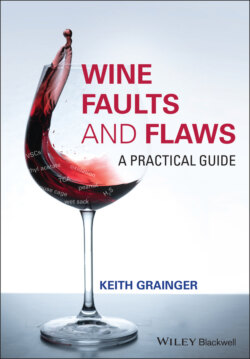Читать книгу Wine Faults and Flaws - Keith Grainger - Страница 44
2.3 Tasting Conditions, Equipment, and Glassware 2.3.1 The Tasting Room
ОглавлениеFor any detailed and professional assessment, and particularly when checking for faults and flaws, it is important to taste in suitable conditions. The ideal tasting room will have the following characteristics:
Large: Plenty of room is necessary to give the taster his or her personal space and help concentrate on the tasting;
Light: Good daylight is ideal, and the room (if situated in the northern hemisphere) should have large, north‐facing windows. If artificial light is required, the tubes/bulbs should be colour‐corrected so that the true appearance of the wines may be ascertained;
White tables/surfaces: Holding the glasses over a white background is necessary to assess the appearance and show the true colour and depth of colour of the wine, uncorrupted by surrounding surfaces;
Free from distractions: Extraneous noises are undesirable, and smells can severely impact on the perceived nose of the wines. Tasting rooms should be sited away from the winery, avoiding all the smells of the vat room and cellar, together with kitchens and restaurants. This is vital that when tasting wines for suspected faults, as ambient odours will have a severe impact on the assessment process and sensory detection thresholds. There is no doubt that building materials, decorations, furnishings, and people all exude odours. Indeed, identical wines can be perceived differently according to the surroundings in which they are assessed. Tasters should avoid wearing aftershaves or perfumes, and smoking should not take place in the vicinity;
Sinks and spittoons: Spittoons, regularly emptied, are essential (see Section 2.3.2.4) and sinks for emptying and rinsing glasses are desirable.
There is an ISO standard for the design of tasting rooms: ISO 8589:2007 Sensory analysis – General guidance for the design of test rooms [5].
